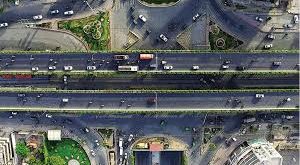In India urban commuting has evolved significantly over the years with three wheelers and auto rickshaws emerging as popular choices for navigating crowded city streets. These versatile vehicles offer an affordable and efficient means of transportation, especially in densely populated areas.
These vehicles are further divided into two segments passenger carriers and goods carriers. Mahindra Treo Plus is used for passenger carrier vehicles with a capacity of 5 passengers. E-rickshaws allow one to save a 15-minute walk for only Rs. 15, making them a time-saving and pocket-friendly option. On the other hand, Bajaj 3 wheeler vehicles are generally used for commuting goods and materials and are best for last-mile connectivity.
Popular models like the Bajaj Maxima, known for its competitive price and reliability, and the Bajaj 3 Wheeler, a staple in the urban transport landscape. Additionally, we will look at the innovative Mahindra Treo Plus, an electric alternative that promises a greener commute. Whether you are a daily commuter or a city traveller, understanding the benefits and drawbacks of these small vehicles can help you make an informed decision for your urban journeys.
Best in Class Features in 3 Wheelers or Auto Rickshaws
Payload Capacity
Goods carriers’ three-wheelers are used for local deliveries and payload transportation. 3 wheeler auto loaders are used for bigger and heavier payloads to delivery/distribution centres, and E-rickshaws loaders are used for further localised deliveries to congested areas. These carriers are used by vegetable vendors, local grocery shops, small-business owners, hardware shops, etc.
2. Travel Distance
3 Wheeler Auto are mostly used for medium and long distance commutes within a city. This is because they have higher-powered motors and bigger battery packs, allowing them to achieve higher speeds and even function all day on a single charge.
On the other hand, E rickshaws are used for short-duration trips, i.e., within a locality. Because of the smaller batteries, these vehicles cannot be operated for longer periods. Moreover, they must be charged frequently (drivers carry extra battery packs to increase earnings by reducing charging breaks). However, they are more compact, which allows them to be more manoeuvrable in small localities and on roads.
3. Cost and Facility Requirments
The pricing for Bajaj 3 wheelers begins at Rs. 1.96 Lakh to Rs. 3.82 Lakh. Bajaj plays a crucial role in India’s industry for three wheeled vehicles. The Bajaj 3 wheeler BS6 is a cost-effective and fuel efficient solution that meets the needs of urban and rural sectors.
The company offers a diverse selection of 3 wheelers to cater to different customer requirements. The Maxima Cargo E-TEC 9.0, Compact RE, Maxima Z, and Bajaj Maxima C are among the well liked models of Bajaj three-wheelers. These Bajaj Tempo three-wheelers are available in different fuel choices, such as petrol, diesel, EVs, and CNG. Also, the popular model Bajaj Maxima Price ranges from Rs. 2.83 Lakh – 2.84 Lakh.
On the other hand, electric auto rickshaws like the Mahindra Treo Plus are among the best-selling models, and range in price from Rs. 3.52 Lakh to Rs. 3.69 Lakh. Even infrastructure costs are higher because larger batteries require proper industrial equipment and charging units. The availability of charging infrastructure is important for the widespread growth in the usage of electric autos. Both private and public entities are setting up charging stations.
The batteries that are found in the E-Rickshaws can be charged at home with a simple high-voltage charger. However, it can be manufacturers of the vehicles sent along with the vehicle.
Guide & Regulations
As per the guidelines, as the two vehicles are being utilised for business purposes, the administrators of the two vehicles require the suitable permissions and documents that the state specialists expect. 3 Wheeler autos are dependent upon similar guidelines as different vehicles, including well-being principles, discharge norms, and enrollment requirements. They should likewise meet emissions standards, which limit how much pollution they can discharge.
Meanwhile, e-rickshaws are named “non-mechanized vehicles,” which implies that they are not subject to similar safety and emissions standards as vehicles. Even so, e-rickshaws really should be enlisted with the public authority and likewise have a permit to operate.
The 3 Wheeler Autos are placed in a similar segment as the CNG-worked Autos and consequently share similar guidelines, thus having a similar speed limit that shouldn’t surpass 40 kmph. Conversely, for e-rickshaws, the limit is set at 25 km/h, as they are generally for last-mile transportation.
Final Words
In conclusion, both 3 wheeler Autos and E-Rickshaws are great options for transportation. E-rickshaw companies, while serving low-cost, short-distance travel/goods requirements, are also raising their standards and following regulatory requirements. We foresee the lines between 3 wheeler Autos and E-Rickshaws getting blurred going forward. But overall, these three-wheelers have revolutionised the transport market in India and have huge growth prospects.
 Daily Blogger News Stay updated with the latest trends and insights. Your reliable source for daily updates and information.
Daily Blogger News Stay updated with the latest trends and insights. Your reliable source for daily updates and information.






